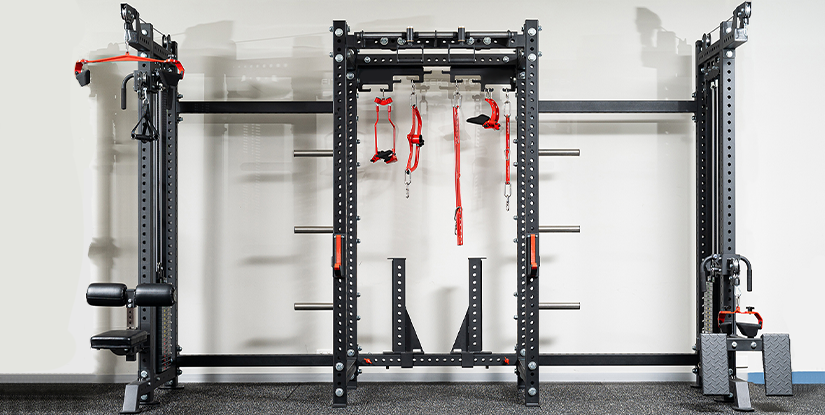Lat Pull Down Cable Guide: Technique, Selection & Maintenance

Overview of the Lat Pull Down Cable
The lat pull down cable is a central component in many strength-training environments, used to develop the latissimus dorsi, upper back, biceps, and stabilizing musculature. Often integrated into multi-station machines or cable towers, the lat pull down cable provides a controlled, adjustable resistance path that accommodates a wide range of users and training objectives.
Design and Components
A standard lat pull down cable assembly consists of a steel aircraft cable, nylon or polyurethane sheath, swivel attachments, lat bar or handles, pulleys, and a weight stack or plate-loading interface. High-quality systems use sealed bearings in pulleys and stainless-steel fittings to reduce friction and extend service life.
Fitness Benefits
- Targets the latissimus dorsi for improved back width and posture.
- Enhances scapular control and shoulder stability.
- Permits variable resistance angles for functional strength transfer.
- Suitable for progressive overload and rehabilitation protocols.
Proper Technique and Biomechanics
Execution should prioritize scapular depression and thoracic extension. Sit with a neutral spine, engage the core, and retract the shoulder blades before initiating the pull. Draw the bar or handles towards the upper chest or clavicular region depending on the desired emphasis: lower-chest pulls emphasize posterior deltoids and middle traps, while high-chest pulls increase lat engagement.
Common Grip Variations
- Wide overhand: greater lat width activation.
- Narrow underhand (reverse): increased biceps contribution and lower-lat engagement.
- Neutral grip handles: improved shoulder comfort and joint-friendly path.
Programming and Progression
For hypertrophy, use 8–12 reps with controlled eccentric phases and moderate tempo. Strength phases benefit from 4–6 reps with heavier loads and longer rest intervals. Endurance or rehabilitation can incorporate higher reps (15–25) with lighter resistance and strict control. Varying grips, tempo, and range of motion helps prevent plateaus and maintains balanced development.
Equipment Selection: What to Look For
When selecting a lat pull down cable system, prioritize build quality and user ergonomics. Key factors include:
- Cable thickness and coating—thicker braided cables and protective sheaths resist fraying.
- Pulley quality—sealed bearings reduce friction and noise.
- Attachment compatibility—quick-change swivels and standard carabiner fittings improve versatility.
- Load interface—weight stack smoothness or plate pin reliability for plate-loaded units.
Installation and Maintenance
Proper installation ensures safety and performance. Follow manufacturer torque specs for anchor points and verify pulley alignment to avoid off-axis wear. Regular maintenance includes inspecting the cable for broken strands, lubricating pulleys as recommended, and checking attachment hardware. Replace cables immediately if any fraying or kinking is observed.
Safety Considerations
- Never allow the weight to slam—control both concentric and eccentric phases.
- Ensure the knee pad or stabilization mechanism is set to prevent body cheat momentum.
- Use appropriate grips and consider wrist straps only when necessary to avoid overreliance.
- Inspect equipment before each session—loose bolts or damaged cables increase injury risk.
Troubleshooting and Common Issues
Typical problems include cable friction, squeaking pulleys, and attachment wear. Lubricate pulleys with manufacturer-approved products and replace worn cables or bearings promptly. If range of motion feels restricted, check for obstructions and verify cable routing through the pulley system.
Accessories and Add-Ons
Popular attachments to enhance lat pull down cable use include multi-grip bars, V-rows handles, single-handle grips, and triceps ropes. Swivel carabiners and quick-change adapters increase workout variety without additional machines.
Maintenance Checklist
- Weekly visual inspection of cable and fittings.
- Monthly pulley lubrication and alignment check.
- Annual professional inspection for commercial settings.
- Immediate replacement of any frayed or kinked cable.
FAQs
What muscles does the lat pull down cable target?
Primarily the latissimus dorsi, plus biceps, teres major, and scapular stabilizers.
Is the lat pull down better than pull-ups?
Lat pull downs are more accessible and adjustable; pull-ups offer greater functional carryover and bodyweight strength demands.
How often should I train lat pull downs?
Two times per week is effective for most trainees, allowing recovery between sessions.
Can I use the same cable for heavy loads?
Only if the cable’s rated capacity and attachments meet the required load—follow manufacturer limits.
Why does the cable squeak?
Squeaking usually indicates dry pulleys or misalignment—clean and lubricate per guidelines.
How do I choose the right grip?
Match grip to your training goal: wide for width, narrow underhand for lower-lat and biceps focus.
When should the cable be replaced?
Replace immediately if there is any visible fraying, kinking, or broken strands.
Are wrist straps necessary?
Not required; straps help when grip is a limiting factor but avoid overuse to maintain grip strength.
Can lat pull downs help posture?
Yes—when performed with proper scapular control and thoracic extension, they strengthen postural muscles.

